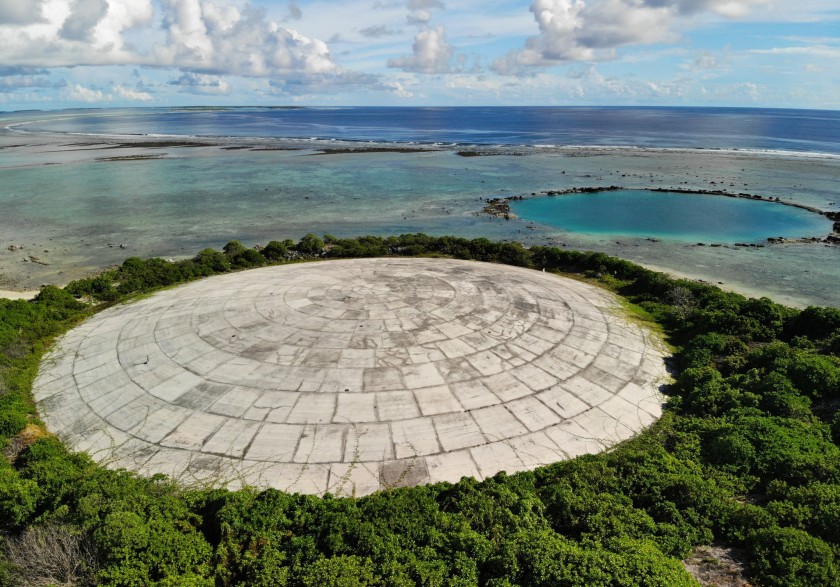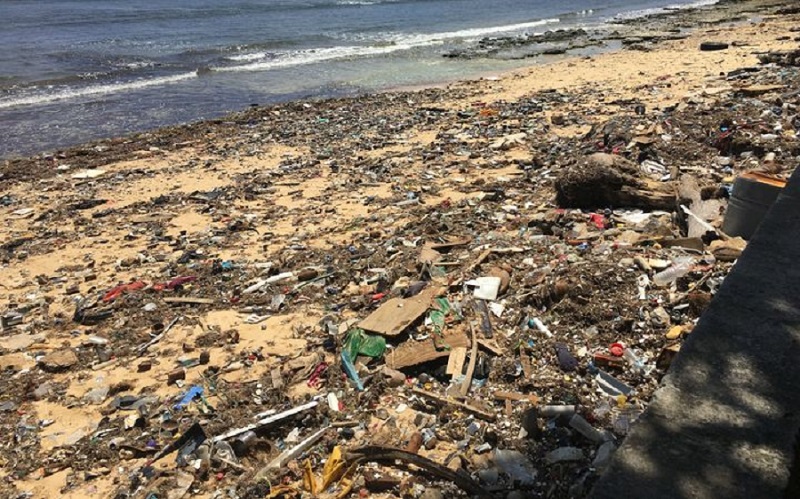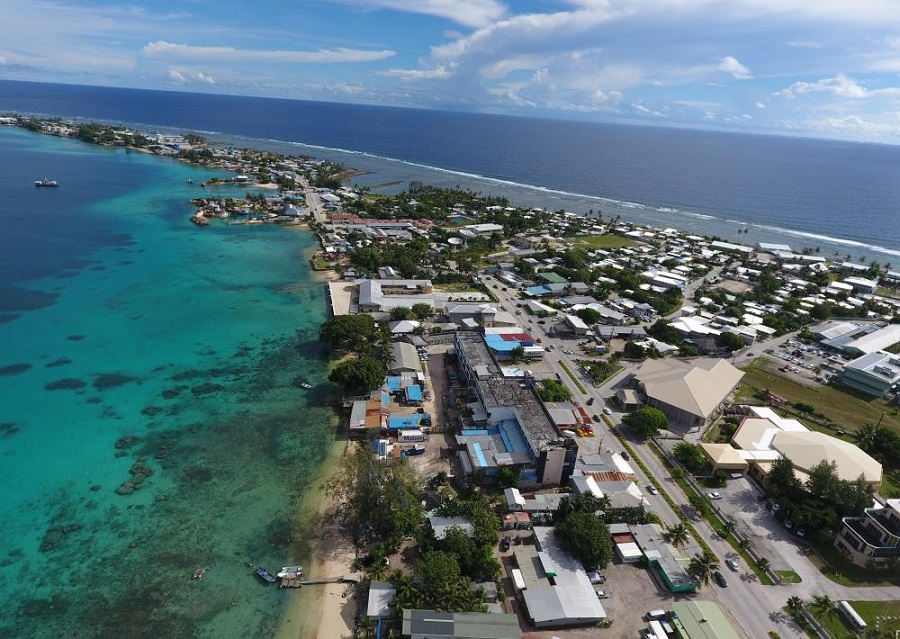Locals of the Marshall Islands call the Runit Dome nuclear-waste site ‘The Tomb’.

This nickname has a sad story behind it. After the USA stopped nuking the Islands, Pentagon left biological armament there. Workers buried radioactive waste to clean the dangerous remains left behind after the US military attack.
From 1977 to 1980, almost 4,000 US servicemen cleaned up the former nuclear testing site of Enewetak Atoll. But how did they do this complicated task?
Well, they scoop up infected dirt as well as other radioactive waste materials and it all went into the Runit Dome.
Just imagine that The Tomb holds enough radioactive waste to fill more than 30 Olympic-sized swimming pools. Furthermore, it contains irradiated soil carrying plutonium.
If you don’t know what plutonium is, I’m here to explain it to you. It’s an isotope so dangerous that it can provoke lung cancer if inhaled.
But the most dangerous threat for the Marshall Islands is climate change. According to The Los Angeles Times, climate change is cracking the dome. Rising sea levels are breaking open America’s Tomb and it could spill nuclear thrash into the Pacific Ocean.
Brief history of the Marshall Islands

More than 50,000 people live on the Marshall Islands. From 1946 to 1958, their home was just a proving ground for America’s nuclear storage of weapons.
On March 1, 1954, the Pentagon conducted Castle Bravo and detonated the largest nuclear weapon (a 15 megaton thermonuclear warhead). Of course, the radioactive waste from the explosion rained down on the poor people of the Marshall Islands.
“It was only a matter of two or three years before women on the island started to give birth to things less than human,” a Marshall Islands woman confessed decades after the fatal explosion.
As you can imagine, birth deformities are so ordinary that people even invented nicknames such as jellyfish children and grape babies to describe them.
Despite that America has largely dismissed its responsibility to the Marshall Islands, we can’t deny that the Tomb is cracking as the sea temperatures are still rising.
America thinks the Marshall Islands should take care of the Tomb. On the other hand, Hilda Heine, the president of the Republic of the Marshall Islands, declared firmly:
“I’m like, how can the dome be ours? We don’t want it. We didn’t build it. The garbage inside is not ours. It’s theirs.”
After all, does The Tomb belong to America or to the Republic of the Marshall Islands?

Nevertheless, Alex Wellerstein, a nuclear historian at Stevens Institute of Technology, disapproves America’s attitude towards the Marshall Islands:
“That somehow the world’s richest nation can’t seem to find the political will to make things right with a small, poor nation that sacrificed much in the name of American national security is a travesty. U.S. officials in the Cold War were quick to talk about how important the testing was to American survival, but somehow that importance never translated into a sincere gratitude to the suffering Marshallese.”
Although we don’t know the ending of this conflict, we know for sure that some regions of the Marshall Islands are more radioactive than Chernobyl.
And we also must know that the Nuclear Claims Tribunal, the authority that can intermediate relations between the United States and the Marshall Islands, awarded the Marshall Islands $2 billion in damages in 2001. Currently, Washington has paid only $4 million.












































